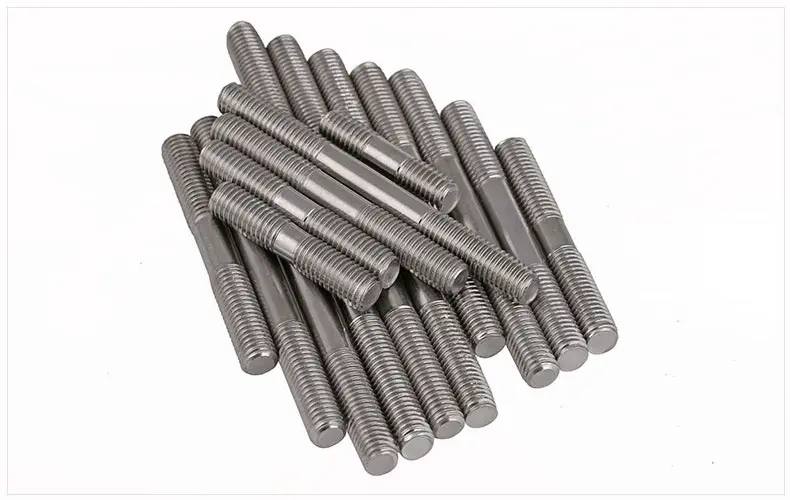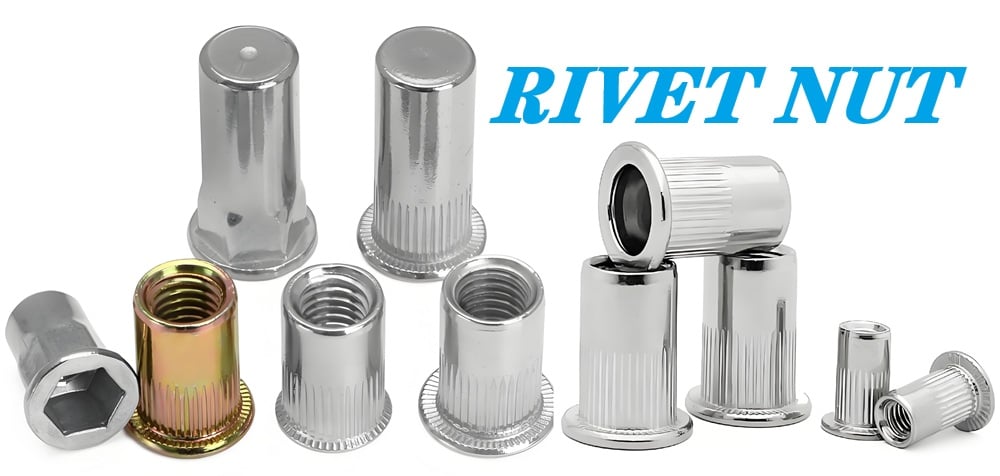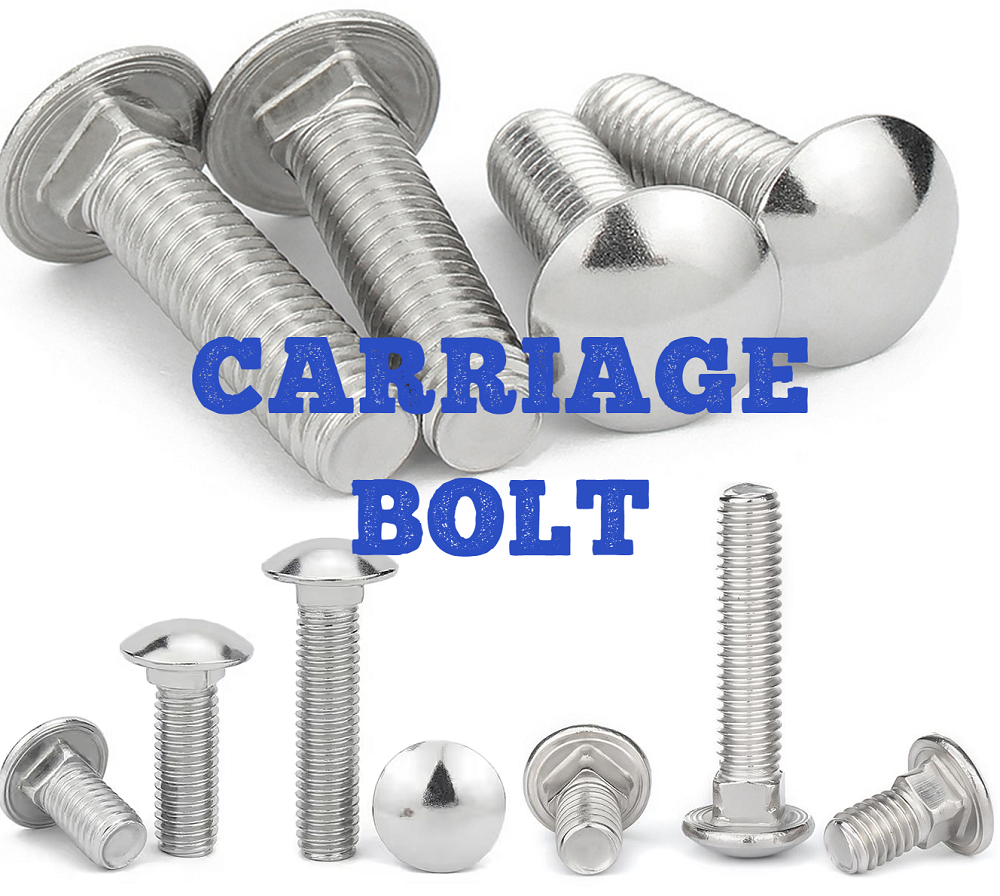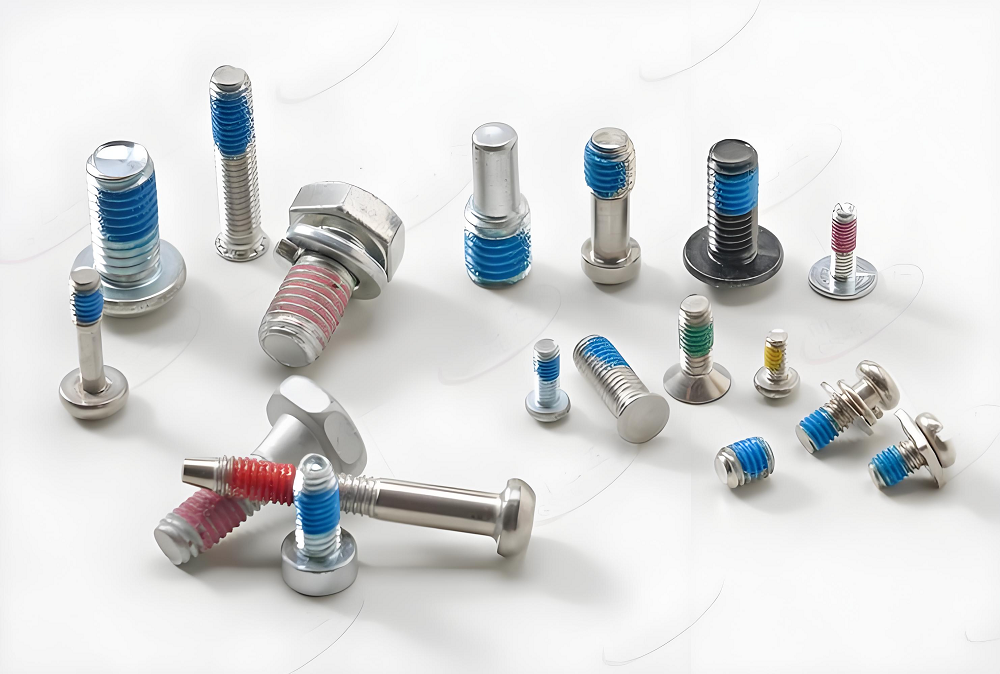The position and forms of threads lead to various fasteners in mechanical engineering. We have talked about the basic fastening of CNC parts, including screws, rivets, bolts, etc. In this article, we are going to discuss what a stud is in the mechanical industry, the common types of stud fasteners, and the differences between screws, bolts and studs. Also, we’ll present the ASME B16.5 standard stud bolt size chart.
What Is a Stud Fastener in Mechanical Engineering?
In mechanical engineering, the stud is a type of fastener with no head, only external threads on both ends. When connecting, one end must be screwed into the part with an internal thread hole, and the other end must pass through the part with a through-hole, and then screw on the nut to make the two parts firmly connected into a whole. This connection form is called a stud connection, which is also a removable connection. It is mainly used when one of the connected parts is thick, requires a compact structure, or is not suitable for bolt connection due to frequent disassembly.
Bolt vs. Screw vs. Stud: What Are the Differences?
A stud is defined as an externally threaded headless fastener with a cylindrical rod (threads often on both ends). Stud fasteners are often used to screw components in place by being screwed into a base material, so nuts can be attached on either end.
A bolt is characterized by a cylindrical shaft with partially or fully external threads and a head (threads often located on one end); it is usually used with a nut to secure two or more objects together. Bolts are inserted into pre-drilled holes.
A screw fastener has a pointed end and helical threads that allow it to be driven into materials without the need for nuts. Screws often have fully threaded shafts from the tip to the head, and some types have self-tapping tips.
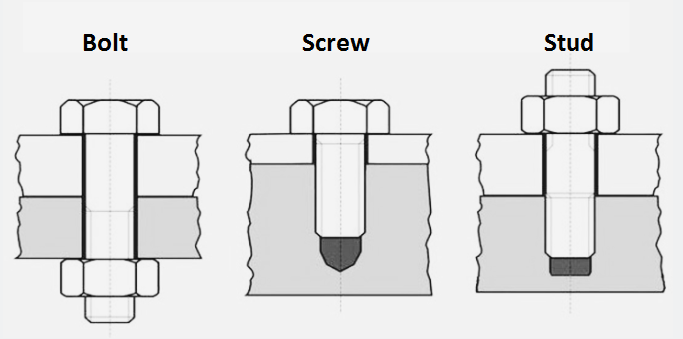
Advantages of Studs Over Bolts
- Better clamping consistency: Studs distribute tension evenly across threads, and no torque is applied directly to the stud during installation, reducing thread damage.
- Space efficiency: The headless design fits in tight spaces (such as engine blocks, narrow flanges) where bolt heads can’t reach.
- Higher vibration resistance: Tension-based clamping stays secure in high-vibration environments (like automotive wheels, machinery).
- Easier component alignment: Studs act as guides—components can be slid onto studs before tightening nuts (ideal for heavy parts like engine heads).
Advantages of Studs Over Screws
- Stronger clamping force: Studs and nuts create higher tension than screws (better for heavy loads or thick components).
- Detachable & reusable: Screws can strip threads when removed repeatedly, while studs (paired with nuts) are more durable for frequent disassembly.
- Compatible with thick materials: Screws have limited thread engagement depth, and studs can span thicker components with nuts on both ends.
Types of Stud Fasteners – Classification of Studs
Fastening studs can be classified into different categories based on the threaded length and locations. Learning about types of studs can help you select the best stud based on your needs.
1. Double-End Studs
Double-end stud bolts have equal-length threads on both ends to accommodate a nut, with an unthreaded portion in between the two threaded ends. Double-end threaded studs should be matched with nuts and washers for two connected parts with through holes, suitable for applications where torching from both ends is necessary or desirable. Dimensions can be defined in both metric and imperial systems with Unified National Coarse Pitch, Fine Pitch, etc. A variation of this type, double-end studs with reduced shank, which features a reduced diameter on the middle portion.
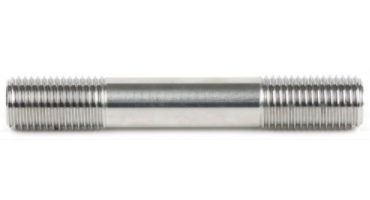
2. Tap End Studs
This type of stud has unequal lengths of threads. The shorter thread on one end, called the tap end, is used for screwing into a tapped hole, and the longer thread on the other end, called the nut end, is used to accommodate a nut. Tap-end threaded studs are often applied in custom bolting requirements.
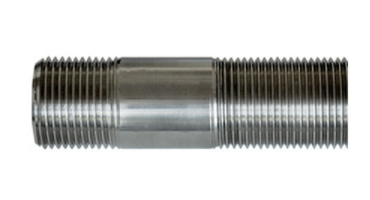
3. Fully Threaded Studs
Also known as continuous threaded studs and referred to as a piece of threaded bar, are threaded from end to end and often used for fastening large parts together, such as flange bolting with two nuts supplied. Other purposes of fully threaded studs are to provide an adjustable part for structures and machines. Continuous threaded studs can be moved over a long distance along with the bar, which also generates a large force.
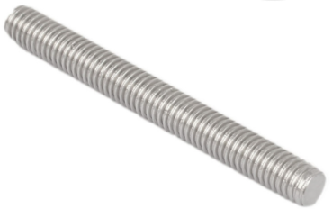
4. Single-End Studs
It is only threaded on one end, while the other end is completely smooth. This structural design makes it suitable for specific connection scenarios that require one-sided fixing. Single-end studs are applied in building construction and some light-duty mechanical installations. The threaded end is used to connect with fixed parts, and the smooth end can be combined with other components as needed to play a fixing or positioning role.
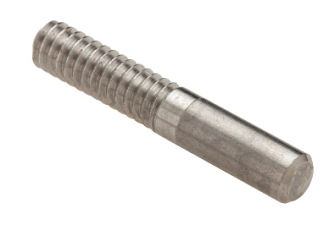
5. Other Studs
There are also locking studs, timber studs, welding studs, saddle studs, cripple studs, bonding studs, clinch studs, and more types of special studs.
One end of the welding stud is welded to the surface of the connected piece, and the other end (threaded end) passes through the connected piece with a through-hole. Then, the washer is put on, and the screw on the nut is screwed on to connect the two pieces as a whole.
How to Measure Wheel Stud Diameter and Thread Pitch?
The main purpose of stud fasteners is to connect parts featuring internally threaded holes. They are commonly utilized in wheel hub assemblies and are effective at fastening flanges and gaskets to maintain a secure seal. By tightly holding machine components, stud fasteners help stop fluids from leaking out. Their robust design makes them suitable for building heavy machinery such as turbines and tanks.
- Stud Diameter: Determines the stud’s load-bearing capacity; thicker studs require more torque to stretch (acting like a spring) and maintain clamping force.
- Thread Pitch: Defines the spacing of threads. For imperial units, it’s threads per inch (TPI); for metric, it’s the distance (in mm) a nut moves per full thread turn. Finer pitches (more TPI/ smaller mm spacing) offer better mechanical advantage, requiring less torque to achieve the same tension.
Method 1: Use a Thread Checker Kit (Simplest & Most Accurate)
Thread checker kits include small, labelled tools that simulate stud ends or nut threads. Select a checker tool and screw it onto the stud. If it fits snugly (no wobble or forced turning), the tool’s label indicates the diameter and pitch (e.g., “1/2 inch – 20 UNC” or “M14 x 1.5”).
Method 2: Use a Stud Gauge (Measure Diameter and Pitch Separately)
If you don’t have a thread checker kit, use a dedicated stud gauge (or combination wrench set for diameter):
Step 1: Measure Stud Diameter
Choose a gauge size that fits snugly over the stud’s threaded end (not the smooth middle section). If the gauge slips loosely, it’s too big; if it won’t fit, it’s too small.
- Imperial diameter examples: 1/4 inch, 3/8 inch, 1/2 inch, 5/8 inch.
- Metric diameter examples: 10mm, 12mm, 14mm, 16mm.
Step 2: Measure Thread Pitch
Use the pitch side of the gauge: Align the gauge’s teeth with the stud’s threads. The correct pitch will have the gauge’s teeth fit perfectly into the thread grooves (no gaps or misalignment).
- Imperial (TPI): Count how many threads fit into 1 inch of the stud (or use the gauge’s TPI markings). Common examples: 18 TPI, 20 TPI.
- Metric (mm): The pitch is the distance between two adjacent thread crests (e.g., 1.25mm, 1.5mm, 2.0mm). The gauge’s metric markings will indicate the correct size.
Stud Bolt Size Chart
- NPS: The nominal diameter of the pipe that the flange/stud bolt corresponds to. It’s a standard way to specify pipe size.
- Diameter of Bolts: The diameter of the stud bolts in inches. This is the thickness of the shaft.
- Bolt Length RF (Raised Face): Length of the stud bolt used with flanges that have a raised face of 0.25 inches. Stud bolt length is measured parallel to the bolt axis from the start of the thread to the other end, not including the chamfered tips (the pointed ends are excluded from the length).
- Length RTJ (Ring Type Joint): Length of the stud bolt used with ring joint flanges, which have a different sealing face style than raised face. Usually, these bolts tend to be a bit longer than RF bolts.
ASME/ANSI B16.5 Class 150 Stud Bolts Dimensions for Flanges
| NPS (Nominal Pipe Size) | Diameter of Bolts (inch) | Bolt Length for RF (mm) | Bolt Length for RTJ (mm) |
| 1/2 | 1/2 | 55 | |
| 3/4 | 1/2 | 65 | |
| 1 | 1/2 | 65 | 75 |
| 1.1/4 | 1/2 | 70 | 85 |
| 1.1/2 | 1/2 | 70 | 85 |
| 2 | 5/8 | 85 | 95 |
| 2.1/2 | 5/8 | 90 | 100 |
| 3 | 5/8 | 90 | 100 |
| 3.1/2 | 5/8 | 90 | 100 |
| 4 | 5/8 | 90 | 100 |
| 5 | 3/4 | 95 | 110 |
| 6 | 3/4 | 100 | 115 |
| 8 | 3/4 | 110 | 120 |
| 10 | 7/8 | 115 | 125 |
| 12 | 7/8 | 120 | 135 |
| 14 | 1 | 135 | 145 |
| 16 | 1 | 135 | 145 |
| 18 | 1.1/8 | 145 | 160 |
| 20 | 1.1/8 | 160 | 170 |
| 24 | 1.1/4 | 170 | 185 |


